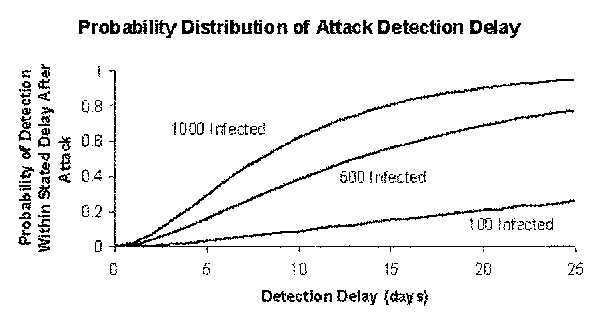Volume 9, Number 8—August 2003
Perspective
Detecting Bioterror Attacks by Screening Blood Donors: A Best-Case Analysis
Figure 1

Figure 1. Probability distribution of attack detection delay for a noncontagious agent. Blood donations occur at rate k=0.05 per person per year, the screening test has a mean window period of ω=3 days, and initial attack sizes range from 100 through 1,000 infections.
Page created: December 22, 2010
Page updated: December 22, 2010
Page reviewed: December 22, 2010
The conclusions, findings, and opinions expressed by authors contributing to this journal do not necessarily reflect the official position of the U.S. Department of Health and Human Services, the Public Health Service, the Centers for Disease Control and Prevention, or the authors' affiliated institutions. Use of trade names is for identification only and does not imply endorsement by any of the groups named above.